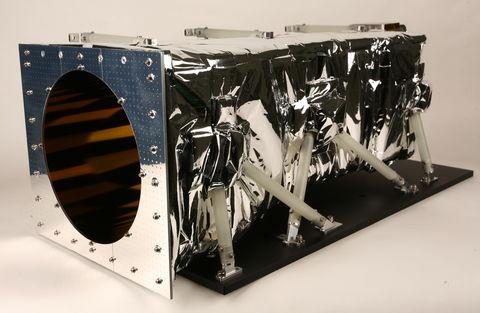Welcome to MIRIS Homepage
The MIRIS (Multipurpose IR Imaging System) is the main payload of the third Korean scientific small satellite, STSAT-3. MIRIS consists of two near-infrared cameras. One is the Space Observation Camera (SOC) and the other is the Earth Observation Camera (EOC). The SOC is a near-IR (0.9–2.0 μm) imaging camera with an aperture of 80 mm and a field of view of 3.67° × 3.67°, using a 256 × 256 PICNIC sensor. The telescope part of the SOC is cooled down to 200 K by radiative cooling to reduce the thermal noise, and the Dewar part is cooled down to 90 K to ensure the best performance of the IR sensor. There are two scientific goals for the SOC:
- To measure the absolute brightness and the fluctuation of the cosmic IR background (CIB) to study its origin and
- To survey the Paα emission line along the Galactic plane to study the warm ionized medium.
There is a filter wheel with six filters in the Dewar to assist in the completion of these objectives. The SOC flight model was successfully launched in November of 2013 and performed observations by 2015 May.

Flight model of MIRIS SOC.